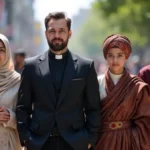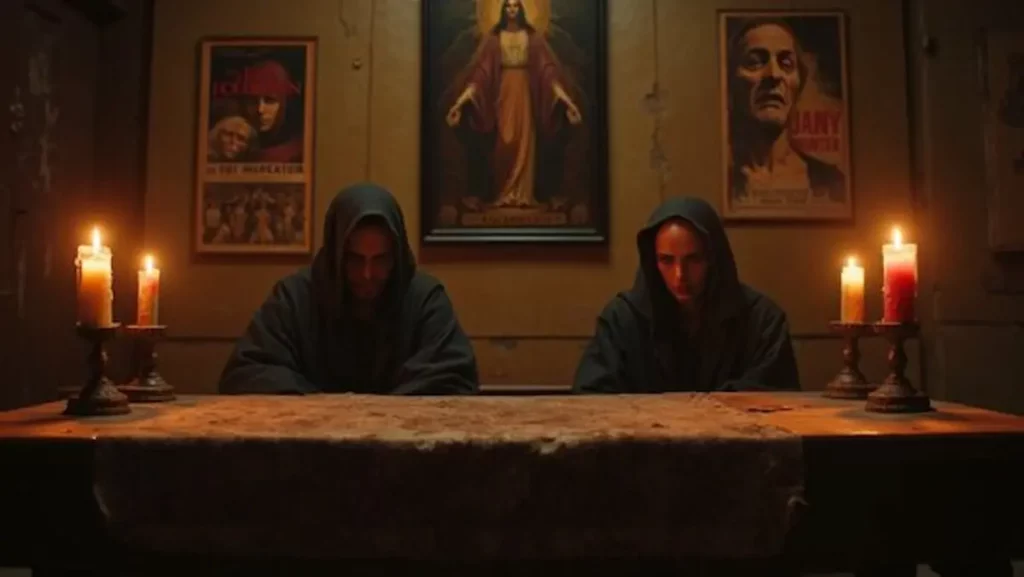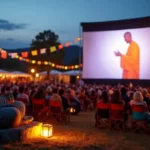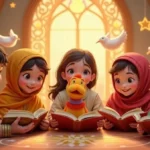
How religion influence fashion?
One of the most fascinating ways culture shapes style is through religion’s influence on fashion, revealing deep meanings behind what we wear every day.

Religion in horror movies is more than a background detail, it’s a force that shapes the story, the fear, and the questions audiences take home. Sometimes it’s portrayed as a shield of hope against darkness; other times, as a mystery that unsettles and challenges belief. This tension is what makes religion in horror movies so compelling, and often controversial.

By exploring how faith, ritual, and the supernatural are woven into these films, we begin to see not just a genre trope but a reflection of cultural fears and spiritual imagination. The real question is: do these movies use religion to terrify, to comfort, or to make us think more deeply about the unknown?
Religion in horror films has always played a powerful role in shaping stories, symbols, and fears. From the earliest days of cinema, religion influenced horror by tapping into moral anxieties and the fear of the unknown.
These films often use spiritual conflict and supernatural forces to explore questions of belief, sin, and redemption. By drawing on cultural traditions and the historical weight of faith, religion in horror films creates tension that feels familiar and meaningful.
Whether through exorcisms, cursed relics, or battles between good and evil, spirituality remains central to how these stories connect with audiences. As a result, religion in horror films continues to guide the genre’s themes and leave a lasting impact on viewers.
Exorcism in horror narratives highlights the powerful clash between human vulnerability and unseen, malevolent forces.
In many stories, exorcism rituals become the focal point, showcasing intense spiritual battles and the struggle to reclaim purity and control. These scenes often symbolize hope in the midst of darkness, using exorcism as a lens to explore faith, doubt, and the human spirit.
Portrayal of demonic entities and spirits is a powerful theme in horror, revealing how culture processes fear, faith, and the unknown.
In many stories, demonic entities and spirits reflect real anxieties through possession, spiritual warfare, and eerie signs that challenge belief.
Faith based horror often uses religious symbolism, sacred texts, and rituals to show the struggle between good and evil, reminding viewers that demonic entities and spirits are not just monsters, but symbols of moral and spiritual conflict.
Religious artifacts and icons play a powerful role in horror stories, revealing how faith, spirituality, and belief shape the battle between good and evil.
In many narratives, demonic entities and spirits are shown interacting with sacred objects, reminding us that religion and spirituality can offer protection, guidance, and meaning.
This symbolism of religious artifacts and icons helps audiences connect with deeper themes, showing how devotion, prayers, and cultural traditions become tools of divine intervention.
Religious fear is a powerful force in shaping audience perception in horror films. This type of fear taps into personal beliefs, cultural narratives, and spiritual teachings, making viewers confront their own moral and spiritual conflicts.
When religious fear is present, it can trigger deep psychological reactions tied to religious trauma, spiritual struggles, and ethical dilemmas. By weaving religious fear into storytelling, filmmakers create more engaging, emotionally charged experiences that resonate with faith-based themes, enrich character development, and deepen audience perception through thoughtful portrayals of religion and spirituality.
Religious depictions in horror films often spark intense debate, especially when religion and spirituality are used to build fear or challenge belief systems.
Controversies surrounding religious depictions include concerns about religious censorship, audience backlash, and whether faith is shown respectfully. Many viewers worry about cultural appropriation, moral implications, and theological accuracy, which can make religious depictions feel exploitative rather than authentic.
As filmmakers balance narrative tension with respectful storytelling, audiences continue to ask for responsible and accurate religious depictions that honor spirituality while exploring the genre’s darker themes.
The battle between good and evil in horror often draws on religion and spirituality to shape the story and raise meaningful questions.
While supernatural elements drive the fear, the battle between good and evil in horror also reflects moral choices, tempting characters to cross spiritual boundaries or seek redemption.
Religious horror often explores faith, morality, and the supernatural, which makes cultural sensitivity essential.
In religious horror, creators should handle sacred symbols and traditions with care to avoid cultural appropriation and backlash from spiritual communities.
Ethical storytelling in religious horror means respecting representation, setting clear narrative boundaries, and addressing moral dilemmas with empathy.
It also involves understanding censorship issues and the wider social impact of spiritual themes.
Religious horror elements in films can stir powerful reactions by touching on core beliefs, doubts, and fears. When religious horror elements appear on-screen, they may trigger feelings like existential dread, moral conflict, or anxiety about the supernatural, challenging personal faith and long-held assumptions.
These stories often explore guilt, temptation, and ambiguity, making viewers confront their own values. By blending faith struggles with fear, religious horror elements create an emotional impact that resonates on both conscious and subconscious levels, encouraging reflection on spirituality, morality, and the search for meaning.
Religious horror has changed a lot as society’s beliefs and fears have evolved. In the early days, religious horror drew on gothic stories and ancient myths, using ghosts, demons, and sacred symbols to show inner battles with faith.
Today, religious horror explores modern culture and real-world anxieties, from moral confusion to identity and community, asking big questions about existence and the soul.
This shift shows how religion, spirituality, and the search for meaning continue to shape the way filmmakers use fear, belief, and the unknown to tell powerful stories.
How will religion-based horror films evolve as society and technology change? Future trends point to a stronger mix of faith-based stories and real-world issues, making these films feel timely and relatable.
Religion-based horror films will likely use more spiritual symbolism and explore a wider range of beliefs, giving viewers deeper and more respectful portrayals of religion and spirituality.
With new tools like virtual reality, AI-driven effects, and immersive sound, filmmakers can create richer worlds, bringing religious themes to life and boosting audience engagement.
As a result, religion-based horror films will continue to grow in relevance, bridging sacred traditions with modern fears and cultural conversations.
Religion in horror movies is a complex and compelling topic that reflects how society wrestles with faith, fear, and the unknown. By blending spiritual themes with suspense and the supernatural, these films invite viewers to reflect on morality, belief, and what lies beyond. Religion in horror movies can deepen character arcs and plots, but it can also risk oversimplifying or misrepresenting sacred ideas. As the genre evolves, creators are becoming more mindful of cultural sensitivities and psychological impact, ensuring that religion in horror movies remains a powerful, thought-provoking, and sometimes controversial element of storytelling.

One of the most fascinating ways culture shapes style is through religion’s influence on fashion, revealing deep meanings behind what we wear every day.

Merging faith and film, religion's role in festivals shapes powerful stories—discover how sacred themes challenge and inspire audiences worldwide.

Spanning music, fashion, and media, the subtle sway of religion on pop culture trends reveals surprising connections you won’t want to miss.

Inspiring stories and timeless values come alive in these 6 religious TV shows for kids, inviting families to explore faith together in fun ways.

Jumpstart your spiritual growth with a religious journal that deepens faith and reflection—discover the transformative steps inside this guide.

Musical tales of faith and hope define the 4 best country religion albums of 2025, inviting listeners on a heartfelt spiritual journey. Discover what makes these records unforgettable.